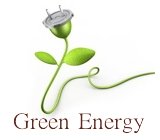Green Building Materials
Best Products For Sustainable Building and Eco Renovations
Choose Green Building Materials to build a safe, family friendly home.

Whether you're planning an environmentally friendly home building project or an eco renovation there are hundreds of different green materials available. Here's what makes building materials environmentally friendly and how to choose products for eco renovations and building projects.
There are a lot of different attributes that make a material "green".
Some products use raw materials that are obtained locally or are manufactured in environmentally friendly ways, others are recycled or reused as is and still others use eco packaging or are easily reintegrated into the planet once their productive life has passed. All are positive practices that add to a product's green score.
Green Construction Materials
An often overlooked aspect of environmental friendliness is expected length of life. Well constructed materials won't be in constant need of replacement which keeps them from filling up landfill sites or being reprocessed.
The greenest products combine a number of eco attributes, producing a material that leaves a very light treadmark from pre-manufacture to end-of-life or what has come to e known as "cradle to cradle sustainability".
Structural materials, insulation, flooring, water saving products, cupboards and countertops, sealants, fixatives and cleaning; you name it and there's an eco friendly building product that'll do it. The more you use, the greener the overall end product.
Leadership in Energy and Environmental Design (LEED) Certification Process
Sustainable design accreditation for building projects can be obtained at one of 4 levels - LEED Certified, LEED Silver, LEED Gold and LEED Platinum - by adhering to strict guidelines during the building process.
Being awarded any of the certifications, demonstrates a serious commitment toward responsible building practices.
Although LEED Certified is the first level, it is by no means easy to obtain.
Choosing Green Building Materials - Maufacturing Process
- Recyclable - Products manufactured from recycled materials. Percentage of product that is made from recycled or benign materials.
- Renewable - Products manufactured from abundant and rapidly renewable resources.
- Manufacturing Practices - Green manufacturing processes that minimize or eliminate greenhouse gasses and energy consumption.
- Transport Requirements - Using locally available resources reduces the need for transportation to the site. The shorter the distance between the harvest site and the project site, the better.
- Salvaged or Repurposed - Salvaged materials can be used as is or repurposed to fill a new need. Salvaged from local structures
- Life Expectancy of Product - Choose products that are durable and have a long life expectancy. Planned obsolescence is no friend of the environment.
- End of Life Recycle Possibilities - Are there recycling facilities or possibilities for refurbishing the product in your area once it's productive life has passed.
- Packaging - The best choice is no packaging at all but it's not always the most practical. Choose packaging that is minimal, recyclable or environmentally neutral... preferably, all three.

That's just the physical properties of the product, there are a number of unseen issues that determine green factor and the influences that a product can have on environment.
Also the product is only one part of the equation, installation and clean-up practices and products will influence just how green the end product is.
Green Building Materials - Air Quality Issues
- Non-Toxic - Look for materials that do not give off (or only low amounts of) toxins, carcinogens or other emissions that are harmful to bio and ecological stability.
- Moisture Resistant - Use products that discourage moisture and the growth of molds in areas where moisture can accumulate to help prevent air quality issues from arising.
- Air Quality Devices - Detectors exist that can identify serious air quality issues like corbon monoxide and radon gasses.
- Minimal Volatile Organic Compounds (VOCs) - A number of construction products contain high levels of VOCs that are released into the structure, sometimes for decades. Choose solvents, paints, sealants and fixatives that have been proven to contain low amounts of these compounds.
Choose materials that reduce energy and water consumption wherever possible and use renewable energy sources to operate the functions of the building once its built as well as during the building process.
Types of Green Building Materials
- Eco Friendly Flooring
- Green Countertops
- Recycled Glass Countertops
- Low Flow Toilets
- Low Flow Showerheads
- Green Insulation
- Green Windows
- Recycled Flooring
Reclaimed floors, doors, fireplace mantles, corbels and other architectural features add a touch of history and soul to a newer structure.
Sustainable building solutions such as straw bale construction or rammed earth alternatives can produce beautiful homes that have very low requirements for heating, cooling and powering.
Products designed to conserve water, like low flow toilets, composting toilets and low flow showerheads add to the long term viability of a green home while subtracting nothing from a comfortable lifestyle.
Visitors to our Green Building Materials page may also be interested in the following pages.
Blue Jean InsulationSheep Wool Insulation










